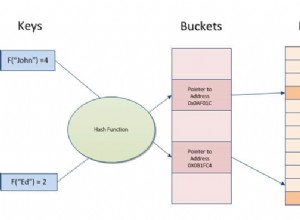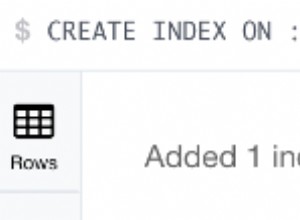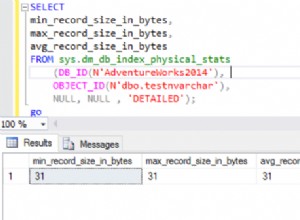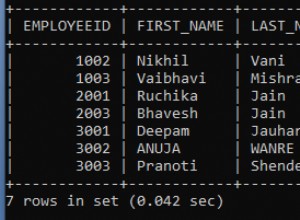Le date sono di tipo varchar2? Quindi, puoi prima convertirlo in formato timestamp. Poiché ha anche il fuso orario, usa la funzione to_timestamp_tz.
SQL> select to_timestamp_tz('Sun Dec 29 11:55:29 EST 2013','Dy Mon dd hh24:mi:ss TZR yyyy') from dual;
TO_TIMESTAMP_TZ('SUNDEC2911:55:29EST2013','DYMONDDHH24:MI:SSTZRYYYY')
---------------------------------------------------------------------------
29-DEC-13 11.55.29.000000000 AM EST
Una volta che le date sono di tipo timestamp, sottrarle ti darà la differenza tra il giorno dell'intervallo e il secondo tipo.
SQL> select to_timestamp_tz ('Mon Dec 30 20:21:34 EST 2013','Dy Mon dd hh24:mi:ss TZR yyyy')
2 - to_timestamp_tz ('Sun Dec 29 11:55:29 EST 2013','Dy Mon dd hh24:mi:ss TZR yyyy') from dual;
TO_TIMESTAMP_TZ('MONDEC3020:21:34EST2013','DYMONDDHH24:MI:SSTZRYYYY')-TO_TI
---------------------------------------------------------------------------
+000000001 08:26:05.000000000
Quindi usa extract per ottenere i singoli componenti dall'intervallo.
SQL> select extract(day from intrvl) as dd,
2 extract(hour from intrvl) as hh24,
3 extract(minute from intrvl) as mi,
4 extract(second from intrvl) as ss
5 from (
6 select to_timestamp_tz ('Mon Dec 30 20:21:34 EST 2013','Dy Mon dd hh24:mi:ss TZR yyyy')
7 - to_timestamp_tz ('Sun Dec 29 11:55:29 EST 2013','Dy Mon dd hh24:mi:ss TZR yyyy') as intrvl
8 from dual
9 );
DD HH24 MI SS
---------- ---------- ---------- ----------
1 8 26 5




